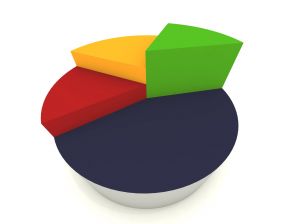Average Rates for Life Insurance
FREE Life Insurance Comparison
Secured with SHA-256 Encryption
Compare quotes from the top life insurance companies and save!
Shopping for life insurance can be a daunting task when you are not familiar with the tools and the resources you have at your disposal. Not only must you decide which type of life product is appropriate to meet your short-term and long-term needs, you must also decide on a death benefit that will be sufficient without taking you over your budget.
While buying the right policy is critical, finding the right policy at the right price is crucial if you want to maintain your coverage by making regular payments.
This is why it is so important to compare prices, review average rates, and understand how different scenarios can affect your rates.
As you shop for life insurance, it can be very helpful to research the average life insurance rates for both term and permanent products. Your personal rates are not going to exactly match average expenditures for life insurance in your state or even in the nation, but it can help you familiarize yourself with common costs of insurance.
Understanding the Life Insurance Marketplace
 The life insurance marketplace can be difficult to understand because licensed insurers calculate their own rates to cover their investments and to ultimately earn a profit.
The life insurance marketplace can be difficult to understand because licensed insurers calculate their own rates to cover their investments and to ultimately earn a profit.
When a company in the financial sector is offering a financial product like life insurance, they must assess mortality and morbidity data, individual risk and financial risk associated with different types of investments like stocks, bonds, and real estate.
The premium dollars will go towards both operations costs and investments so that the company can earn the revenues they need to pay out the projected claims.
The company must file their rates and justify them with the Department of Insurance in their state and then operate in a manner to earn revenues, pay their claims and keep their clients satisfied. In order to stay profitable, several companies will offer multiple lines of life insurance.
The premiums the company has written will be based on the popularity of the product and how strongly the company markets and pushes the product.
It is important to understand that, although the industry is highly regulated and rates must be approved, every company sets their rates to be competitive with a specific line of insurance in a specific target market or niche. You will find that companies are not going to be competitive in every area of the marketplace.
Some companies will be particularly competitive in selling ordinary life to younger age groups or preferred risk classes, and other companies may be priced to attract people shopping for specialized life plans for seniors or high-risk insureds.
This is why it is critical for any consumer looking for the best rates to take time to find a high-ranked, financially strong insurer that offers good rates to the rating class that they are in.
What are the average rates for different insurance products?
Before you begin to compare average expenditures and rates for life insurance, you need to realize the costs for different products like term and permanent life are dramatically different. Each type of insurance product is designed to satisfy different goals and needs.
Here is a breakdown of the primary differences so that you can fully understand why the premiums for a term policy will always be much lower than the premiums for a permanent policy:
Why Term Insurance Is Less Expensive
Term insurance is a type of life insurance that will provide you with financial protection when you have a temporary but long-term need. A majority of people today buy level term policies because it is affordable, provides level benefits, and carries level premiums for a specified period of time.
A term policy is inexpensive because it provides temporary protection and most policies have a duration that is much less than the person’s life expectancy.
Term lengths include 1, 5, 10, 20, 25, and 30 years. The policyholder will generally have the option to renew the term once it is up, but must pay higher premiums at their new age which makes the renewal policy much more expensive.
Why Permanent Insurance is More Expensive
There are two popular types of permanent insurance: Universal Life and Whole Life. Each type of permanent insurance has an insurance component and also an investment component. This is where term and permanent insurance differ. The investment component is where the additional premiums are going.
These premiums are being paid into an investment account where they are accumulating interest as a specific or variable rate. It can be used as a savings vehicle or to eventually pay your premiums later in life.
With whole life, premiums stay level but the policy is valid for life. With Universal Life, the premiums can fluctuate but the account value will offset this fluctuation as you age.
For individuals who have a permanent need for insurance that will never go away, permanent insurance is the policy of choice. These policies also offer living benefits that are not offered by term insurance.
What are term life average rates?
 Average term insurance premiums are usually factored by age, gender and length of the term. Because there are different terms and characteristics, averaging all types of policies for males and females together can be difficult.
Average term insurance premiums are usually factored by age, gender and length of the term. Because there are different terms and characteristics, averaging all types of policies for males and females together can be difficult.
Assuming average quote amounts, a 40-year old male may pay about $350 per year for a level 20-year term with a death benefit of $500,000. The same male at 50 may pays an average of $1000 if he is healthy and about $3000 at the age of 60.
Females rates will be about 5 to 10 percent lower because their life expectancy exceeds that of males by 5 years.
What are permanent life average rates?
Now that you have average term premiums as a basis, it is good to compare those rates to what they would be if the same male was purchasing permanent life insurance.
If the same 40-year old male chose to buy universal life instead of the 20-year term at $500,000, that man would pay an average of $3000 instead of $350. That is almost 10 times the cost of a term plan.
Factors That Can Affect These Average Rates
Now that you have a general idea of how much more permanent insurance is, you need to understand how your personal rates are calculated. You may pay significantly less than or more than the average rates depending on the personal information that you provide and how this person information affects the underwriter’s decisions who reviews your file.
Knowing what factors will ultimately affect your rates can help you as you start shopping for a specific type of plan or a specific death benefit.
It is important to be realistic about the risk class you will be in based on your health and physical characteristics.
Here are some of the different things that can raise or lower your rates:
Age and Gender
Average rates are generally based on your age and your gender, but it is important to know that males pay more than females and your age, especially when you hit 50, will impact premiums.
Height and Weight
Your height to weight ratio can affect premiums if you are considered overweight, underweight or obese. Determine your Body Mass Index and see if it is in a healthy range to assess whether or not your weight will affect your rating class.
Occupation and Hobbies
If you have a dangerous job or you participate in hazardous activities, you are exposed to a higher risk of death. Find out if specific activities or occupations are excluded, or if you will be table rated with a surcharge because of your profession or recreational activities.
Bad Habits
 Do you smoke? Do you drink more than the average person? Do you have a lead foot or have you been convicted of a DUI? If you answered yes, you may find it difficult to find a plan within the average range.
Do you smoke? Do you drink more than the average person? Do you have a lead foot or have you been convicted of a DUI? If you answered yes, you may find it difficult to find a plan within the average range.
Insurers may look back as far as five years to check your motor vehicle record or even if you have a history of substance abuse when underwriting your policy.
Region
Mortality rates may range from region to region. In an area where there is high pollution, high murder rates or a large incidence of accidents, the rates could be higher.
If you are ready to start looking for auto insurance so that you can feel at ease every day that you commute to work or go out for a bike ride, now is the time to compare rates.
The quickest and most effective way to price insurance and find the best rates with top-rated insurers is to use an online quote comparison tool.
Use the FREE tool at the bottom of this page to get started!
The intelligent quoting tool will give you the power to price insurance with multiple companies without having to contact them separately. Enter your information accurately, compare the costs, and select the best life insurance policy.
Start Saving on Life Insurance!
Enter your zip code below to compare rates from the top companies in your area
Secured with SHA-256 Encryption



